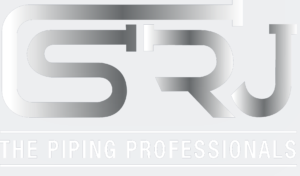Mastering Project Management for Piping Fabrication Success
Table of Contents
Managing complex piping fabrication projects, with their intricate blueprints, tight deadlines, and pressure to meet cost and quality standards, is a significant challenge. Traditional methods often fall short in this delicate dance of planning, coordination, and execution, where errors can result in substantial delays and budget overruns.
This guide aims to empower project managers and stakeholders by providing proven strategies and tools for effective piping fabrication project management, covering workflow optimization, cost control, risk mitigation, and seamless execution from shop to site, ultimately leading to predictable and successful project delivery.
Step-by-Step Guide: Managing Piping Fabrication Project
Effective project management for piping fabrication is a multi-faceted process that requires meticulous planning, rigorous execution, and proactive control. Let’s break it down into actionable steps.

Comprehensive Planning and Scope Definition
The foundation of any successful piping project lies in thorough planning and execution. This isn’t just about drawing lines on a Gantt chart; it’s about defining the project scope, breaking it down into manageable parts, and laying out the entire project control strategy.
What to do:
- Review and finalize all engineering deliverables: P&IDs, 3D models, piping general arrangement drawings, isometric drawings, material specifications, and welding procedures.
- Develop a detailed Work Breakdown Structure (WBS) specific to piping fabrication and installation. This should break down the project into smaller, more manageable tasks, such as material procurement, spool fabrication, welding, testing, coating, transportation, and site installation.
- Define clear project objectives, deliverables, milestones, and success criteria. What constitutes a completed spool? What are the quality acceptance standards?
- Identify potential constraints and assumptions (e.g., site access limitations, vendor lead times, weather conditions).
Why it matters:
A crystal-clear scope and a detailed Work Breakdown Structure (WBS) prevent scope creep, ensure everyone is working towards the same goals, and provide the necessary framework for accurate scheduling, resource allocation, and cost estimation. This level of detail is what differentiates successful projects, such as those utilizing structured methodologies like Advanced Work Packaging (AWP), which competitor analyses have mentioned as accelerating schedules.
Develop a Realistic Schedule and Resource Plan
Time is often the most critical constraint in piping projects. Developing a realistic and detailed schedule, coupled with a solid resource plan, is paramount for effective pipe fabrication time management and avoiding delays.
What to do:
- Based on the Work Breakdown Structure (WBS), sequence the activities in a logical manner. Consider dependencies between tasks (e.g., fabrication must precede site installation of a spool).
- Estimate durations for each activity. Consult with fabrication supervisors, welding experts, and logistics teams for accurate estimates.
- Identify critical path activities – those tasks that, if delayed, will delay the entire project timeline. Focus your monitoring efforts here.
- Allocate the necessary resources, including labor (welders, fitters, inspectors), equipment (cranes, welding machines, testing equipment), and materials, to each activity.
- Develop a resource leveling strategy to avoid overloading specific resources and ensure efficient utilization.
- Incorporate buffer time for potential unforeseen issues, especially in activities known for their potential to cause delays, such as complex welds or materials with long lead times.
Why it matters:
A well-developed schedule provides a roadmap for the project. A robust resource plan ensures you have the necessary personnel and equipment when and where they are needed. Failing to complete this step can result in bottlenecks, idle time, and missed deadlines, ultimately impacting your ability to deliver on time, as emphasized in discussions about tight timelines.
Implement Robust Cost Management and Procurement
Controlling project cost is a significant objective in piping fabrication projects. Practical cost management of piping projects involves careful budgeting, vigilant tracking, and strategic procurement.
What to do:
- Establish a detailed project budget that is aligned with the Work Breakdown Structure (WBS) and schedule. This should include both direct costs (materials, labor, and equipment) and indirect costs (overhead and project management fees).
- Implement a system for tracking actual costs against the budget. This could involve tracking labor hours, material expenditures, equipment rental fees, and subcontractor invoices.
- Develop a robust procurement strategy for piping materials. This involves identifying suppliers, negotiating prices, managing purchase orders, and tracking delivery times. Consider strategies such as bulk purchasing or just-in-time delivery, where appropriate, for pipe costing.
- Establish clear change management procedures. Any deviation from the approved scope that impacts cost must be formally documented, assessed, and approved before proceeding.
- Regularly forecast remaining project costs to identify potential variances early.
Why it matters:
Cost overruns can sink a project. Proactive cost management allows you to identify potential budget issues early, take corrective action, and maintain financial control throughout the project lifecycle. Effective procurement ensures materials are available on time and at competitive prices, preventing delays and controlling pipe project tools expenditure.
Foster Effective Communication and Collaboration
Piping fabrication projects involve multiple teams and stakeholders: engineering, procurement, fabrication, quality control, logistics, and site construction. Seamless communication piping projects are the glue that holds everything together. Lack of clear communication is a common weakness identified in broader discussions of construction project management.
What to do:
- Develop a comprehensive communication plan outlining who needs to communicate with whom, how often, through which channels, and what information needs to be shared.
- Schedule regular progress meetings with key team members (daily huddles for fabrication floor, weekly updates with the site team).
- Utilize collaborative platforms or project management software that allow for centralized information sharing, document tracking, and task updates.
- Establish clear protocols for issuing and responding to Requests for Information (RFIs) between the engineering and fabrication/site teams.
- Ensure that all stakeholders are informed of the project’s status, upcoming milestones, potential risks, and any changes. Transparency is key for effective collaboration.
- Provide timely feedback loops between the fabrication shop and the site team to address issues and ensure seamless alignment between fabrication and site work.
Why it matters:
Miscommunication leads to errors, rework, delays, and frustration. Effective collaboration ensures that issues are identified and resolved promptly, decisions are made efficiently, and all teams work together towards project completion. Strategies such as regular meetings and clear documentation are essential, as highlighted in communication strategies for the construction industry.
Implement Rigorous Quality Management and Control
Quality is non-negotiable in piping fabrication, particularly in industrial applications where safety and integrity are of paramount importance. Implementing stringent quality control procedures for piping fabrication projects, from material receipt to final testing, is vital.
What to do:
- Develop a comprehensive Quality Assurance/Quality Control (QA/QC) plan specific to the project. This plan should detail inspection points, acceptance criteria, testing requirements (e.g., NDT – Non-Destructive Testing, hydrostatic testing), and documentation procedures, aligned with piping QA/QC standards.
- Ensure all materials received meet the required specifications and have proper mill test reports (MTRs). Implement a material traceability system.
- Establish and enforce strict welding procedures (WPS) and ensure welders are qualified (PQR). Conduct regular weld inspections (visual, NDT).
- Implement in-process quality checks during the fit-up, welding, and assembly processes.
- Conduct required testing (hydrostatic, pneumatic, etc.) according to codes and project specifications.
- Maintain detailed QA/QC documentation, including inspection reports, test results, welder qualifications, and material certificates, to ensure compliance with regulations. This is crucial for project quality and final handover file management, piping.
Why it matters:
Poor quality can lead to leaks, failures, safety hazards, and costly rework or project shutdowns. A strong QA/QC program ensures that the fabricated piping meets the required standards and will perform reliably in service. This focus on quality is a key differentiator, going beyond basic fabrication best practices.
Manage Risks Proactively
Every project has risks, but in complex piping fabrication, these risks can be particularly significant. Identifying, assessing, and mitigating risks proactively is a cornerstone of successful project risk management for piping projects.
What to do:
- Conduct a thorough risk assessment as early as possible in the planning phase. Brainstorm potential risks across all project areas, including technical (welding issues, material defects), schedule (vendor delays, fabrication bottlenecks), cost (material price fluctuations, labor overruns), safety (working at heights, welding hazards), logistics (transport damage, site access), and environmental concerns.
- Assess the likelihood and potential impact of each identified risk.
- Develop mitigation strategies for high-priority risks. What steps can you take to reduce the probability or impact of the risk? (e.g., procure critical materials from multiple vendors, develop contingency plans for site access).
- Develop contingency plans for risks that cannot be fully mitigated. What will you do if a specific risk event occurs?
- Assign responsibility for monitoring and managing each risk.
- Regularly review and update the risk register throughout the project lifecycle. Identify new risks as the project progresses.
Why it matters:
Unmanaged risks can lead to significant disruptions, delays, and increased costs. Proactive risk management allows you to anticipate potential problems and have plans in place to minimize their impact, ensuring smoother project execution and preventing costly surprises. A risk checklist helps formalize this process.
Coordinate Logistics and Site Integration
Successfully fabricating piping spools is only half the battle. Getting them to the site safely, on time, and ready for installation requires meticulous logistical planning and close coordination to align fabrication and site work.
What to do:
- Plan transportation logistics: Determine the mode of transport (truck, rail, sea), required permits, rigging plans, and secure packaging to prevent damage during transit.
- Coordinate delivery schedules with the site construction team to ensure seamless integration. Ensure site readiness (access, laydown areas, lifting equipment) aligns with fabrication delivery dates.
- Develop a site installation sequence that aligns with the fabrication schedule and delivery sequence to ensure seamless integration. Ideally, spools should arrive on site in the order they are needed for installation. This is crucial for efficient onsite pipe work.
- Establish clear communication channels between the fabrication shop and the site team to address any issues that arise during transportation or site receipt (e.g., damaged spools, discrepancies).
- Implement a system for tracking spools from fabrication through transportation and site receipt.
Why it matters:
Poor logistics can lead to damaged materials, site congestion, idle site crews, and significant delays. Effective coordination between fabrication and the site ensures a smooth handover and installation process, minimizing downtime and maximizing efficiency on-site.

Conclusion
Managing piping fabrication projects effectively requires a structured approach that encompasses initial planning and scheduling, cost control, communication, quality assurance, risk management, and seamless site integration.
By understanding detailed planning, leveraging robust tools, and proactively identifying risks, you can confidently navigate challenges and achieve successful, predictable project outcomes.
Start your assessment today to ensure the success and safety of your piping project. Need expert help applying these principles? Explore SRJ Piping India’s solutions.
Effective project management in piping fabrication ensures timely delivery, cost efficiency, and adherence to safety standards. To deepen your knowledge, explore our guide on Ensuring Piping Quality Control for QA/QC strategies and Steel Fabrication Processes for technical insights. Externally, the Project Management Institute (PMI) offers construction-specific frameworks, while ASME’s B31.3 Standards provide global piping compliance guidelines. For advanced techniques, read our blog on Technology in Structural Fabrication, covering automation and IoT innovations.
Recommendations for Fire Safety Services: What You Need to Know
Conclusion Paragraph
Prioritizing fire safety protects assets and lives in industrial settings. Complement this guide with our resources on Fire Protection Systems and Fire Extinguisher Maintenance. Externally, the National Fire Protection Association (NFPA) sets critical safety codes, and OSHA’s Fire Safety Guidelines outline regulatory requirements. For emerging innovations, read our blog on Advances in Fire Safety Engineering, detailing AI-driven detection and suppression technologies.
Need Project Support for Piping Fabrication?
SRJ Piping India helps you streamline planning, fabrication, logistics, and on-site coordination for complex piping projects—ensuring quality, cost-efficiency, and on-time delivery.
